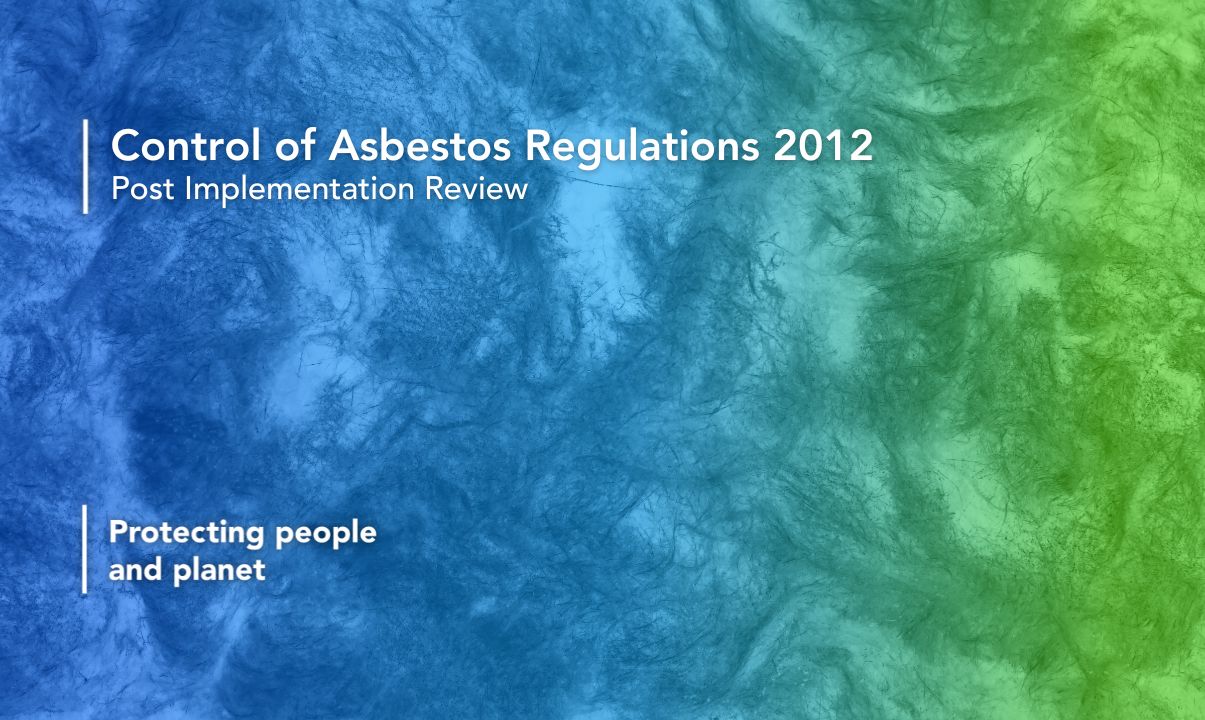HSE Publishes Management of Asbestos in School Buildings Report
7 August 2023
Following the publication of the Health and Safety Executive’s (HSE) report, Management of Asbestos in School Buildings 2022/23, at the start of July 2023, Lucion Group’s QHSE Director Chris Parr provides a concise summary of the report findings and suggested improvements for the safer management of asbestos in schools.
The HSE conducted 421 inspections in schools across Great Britain in 2022/23 to assess how well schools were managing asbestos, in line with the Control of Asbestos Regulations 2012. The main objective was to assess how schools are fulfilling their legal responsibilities in effectively managing asbestos.
Key Findings of HSE Inspections on Asbestos Management in Schools
The key findings of the inspections are as follows:
- Most schools were found to be complying with their legal duties and had effective systems in place to manage and monitor asbestos-containing materials (ACMs).
- Approximately 7% of schools had significant shortcomings in their management plans or surveys, leading to enforcement notices being issued.
- Only one school required prohibition notices as there was a risk of exposure to asbestos. These areas were boiler rooms inaccessible to pupils and staff.
It is important to note that the report highlights that non-compliance with management systems does not necessarily mean there is an actual risk of asbestos exposure.
The HSE inspections also provided demographic information about the schools visited, and various elements related to asbestos management, including surveys, registers, management plans, roles and responsibilities, training, and management of external contractors. The report emphasises the importance of properly managing ACMs to prevent potential exposure to asbestos fibres. Some of the common issues identified and recommended areas for improvement included:
- A lack of documentation and process:
- Many asbestos surveys didn’t clearly show the location of asbestos. Asbestos registers did not indicate completed remedial actions. There was a lack of clear and understandable asbestos management plans, infrequent monitoring of ACMs, and inadequate incident procedures.
- Schools needed to ensure that staff had clear roles and responsibilities for managing asbestos and that contingency plans were in place to cover staff absences.
- Schools should ensure that contractors tendering for work provide risk assessments, method statements, and evidence of asbestos awareness training.
Overall, the report aims to help schools identify gaps in their asbestos management systems and improve compliance with legal requirements to ensure the safety of students, staff, and visitors.
Importance of Properly Managing Asbestos to Prevent Exposure
The HSE suggested in 2012 that 37% of buildings are likely to contain asbestos, which equates to 11,000 schools. However, this figure has been contested by several sources. According to the University College Union, out of approximately 33,600 schools in Britain, more than 75 per cent contain asbestos. This includes around 14,000 schools built after World War II, and almost all schools constructed before 1975 have asbestos. Additionally, many schools that underwent refurbishment during this period also contain asbestos.
The current acceptable level of airborne asbestos fibres, known as the HSE clearance indicator, to ensure safe occupation after licensed asbestos removal is less than 0.01 f/ml. The HSE defines licensable work based on Control Limits, where risk assessments cannot demonstrate that airborne fibre levels will not exceed 0.1 f/ml averaged over a 4-hour period or 0.6 f/ml averaged over a 10-minute period. In comparison, several European countries, including the Netherlands, have implemented even stricter controls, aiming for occupational exposure limits as low as 0.002 f/ml or 0.0003 f/ml in the future.
The concern lies in the fact that airborne asbestos fibres, which are small enough to reach the deep lung tissue, cannot be expelled through normal breathing. Consequently, the body attempts to dissolve these foreign fibres using acids, but some types of asbestos are resistant to this process. As a result, the acid damages the surrounding tissues, leading to scar tissue and asbestos-related diseases.
According to the HSE's latest Workplace Fatality Figures published on July 6, 2023, there were 2,268 mesothelioma deaths in 2021, with a similar number of lung cancer deaths linked to past asbestos exposures. Additionally, there were 537 deaths in 2021 mentioning asbestosis on the death certificate, excluding deaths that also mentioned mesothelioma.
Although the number of asbestos-related deaths is declining, effective asbestos management controls and a stronger focus on Duty Holder responsibilities can further reduce these numbers.
Asbestos Regulations - Am I Responsible?
The responsibility placed on individuals (referred to as 'Duty Holders') who oversee public buildings is stringent, aiming to minimise the health risks associated with asbestos-containing materials (ACMs). There is no justification for anyone to be exposed to potentially hazardous levels of airborne asbestos fibres in any building.
As per the current UK policy, asbestos that remains in good condition and is unlikely to be disturbed is generally not considered a significant health risk, as long as it is properly managed. However, the risk of exposure arises when ACMs are disturbed or damaged, leading to the release of airborne fibres.
The crucial point is that schools should not be unduly concerned about managing asbestos safely. Given the diverse range of construction ages and building types in the education sector, including the various Consortium of Local Authorities Special Programme (CLASP) buildings still in use, engaging experts in asbestos consultancy with specialised building knowledge becomes vital. Each premise needs individual assessment, considering factors such as its age and construction type.
Partnering UKAS Accredited Providers for Safe Asbestos Management in Schools
We are the UK’s market-leading, independent and impartial supplier of asbestos testing, inspection and management services. Providing UKAS-accredited and certified scientific hazardous materials testing, inspection and environmental management solutions, we deliver our trusted services to schools, colleges and universities requiring regulatory compliance in their buildings and/or assets.
Lucion provides to manage the risk of asbestos through:
- Experience and Expertise: Our team has extensive experience working with various local authorities, independent schools, and higher education facilities. Our expertise and knowledge have proven to be invaluable in managing the risk of asbestos effectively.
- Innovative Technology: At Lucion, we stay at the forefront of technology, providing advanced solutions to address asbestos-related challenges. Our unique technology sets us apart and meets the specific needs of our clients in the education sector.
- Comprehensive Services: From conducting gap analyses and compliance reviews to providing technical consultant support and implementing management plans, we offer a full range of services to suit your asbestos management requirements.
- Staff Training: We believe that proper training is essential for compliance and risk management. Our staff management training ensures your team is equipped to handle asbestos-related issues with confidence.
- Flexibility and Responsiveness: We understand that emergencies can happen at any time. That's why we offer flexible working hours and prompt responses to emergency situations to ensure your safety.
- Safety and Security: Your safety is our top priority. Our on-site employees undergo bi-annual DBS checks and wear photographic ID cards, smart liveried uniforms, and drive vehicles with no direct reference to asbestos to minimise any concerns.
Partner with Lucion Services for a safer environment for your staff and pupils. We are committed to managing the risk of asbestos in your estates and going beyond compliance to best practice.
T: 0345 5040 303
About The Author
Chris has over 12 years of experience specifically monitoring, managing and leading on quality assurance for the Lucion Group, having joined us via Lucion’s acquisition of AOH Ltd in 2011. Chris was integral to the successful creation of a strong QHSE culture at Lucion Services, where he maintained an integrated Quality Management System to include ISO17020, ISO17025 (requirements for asbestos testing, and inspection accreditation by UKAS) and ISO9001, ISO14001 and ISO45001 (certified by BSI).
Moving to his role of QHSE Director for the Lucion Group, Chris will utilise his experience gained and integrate our strong culture for integrated quality management across our Lucion Group portfolio of companies, working closely with the Lucion Group Technical Director and our individual business leaders.
Chris Parr
Group Quality and Assurance Director
E: chris.parr@lucionservices.com
T: +44(0)345 5040 303
Linkedin: Chris Parr
Asbestos Management in Education Settings
Head of Business Development Kim Johnson, with 12 years of experience within the asbestos industry, outlines how education settings can manage their asbestos hazards.
No sign-up required.
Asbestos Compliance: 6 Step Checklist
Download our free 6-step Asbestos Compliance Checklist and take the first step to safeguard your teams, contractors, and reputation.
No Sign-Up Required
EHS Compliance: 12 Step Checklist
Download our free 12-step EHS Compliance Checklist and take the first step to safeguard your teams, contractors, and reputation.
No Sign-Up Required
IMPACT Magazine
Industry news delivered by Lucion Group and its subsidiary companies.
Issue 2 May 2023
No sign-up required


 NexGen
NexGen












